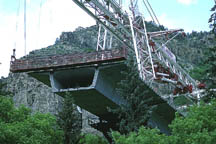STRUCTURAL ENGINEERING
Kavanagh Lecture - Abstract
April 5, 2001
The Sky's the Limit: The History of the Design of Modern Skyscrapers
by
Dr. Charles H. Thornton
Chairman
Thornton-Tomasetti Group, Inc.
ABSTRACT
Skyscrapers are a unique building class that typifies 20th century urban development. Skyscrapers developed from purely economic forces. But they also required the convergence of several key technologies to become practical, from elevators to economical structural steel. One might expect that the real estate and financial forces behind skyscraper construction would lead to fairly standardized, lowest-common-denominator designs. However, many skyscrapers show an amazing degree of variation in size, shape, operations, materials and construction methods. They reflect local real estate and construction market forces at work. They reflect the introduction of new materials and construction methods over time. And last, but certainly not least, they reflect the innovative efforts of design teams with architects, structural engineers, mechanical engineers, construction consultants, owners and developers to meet the competing needs of all parties in new and interesting ways.
Almost any building design can be constructed with enough effort. But the sheer size, construction
limitations and demanding schedules of skyscrapers requires designs that
minimize this effort by explicitly considering how the different design
and construction disciplines must interact. The variations in skyscraper
designs are discussed for a variety of 'classic' and current buildings.
The interactive process is illustrated by a description of the Petronas
Twin Towers in Kuala Lumpur, Malaysia.

